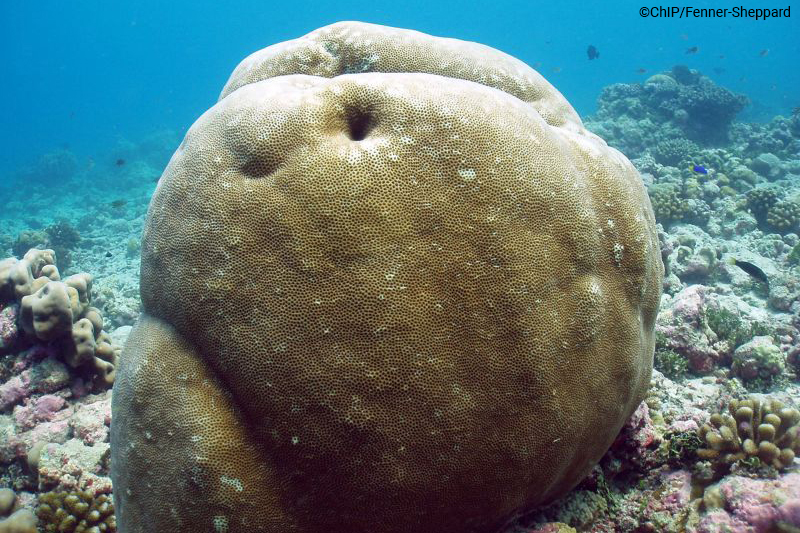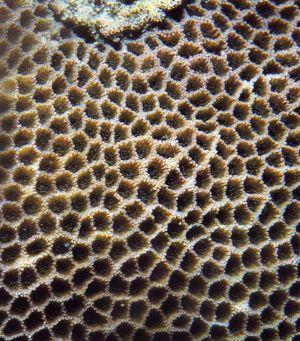About
Poritipora paliformis is the only species within its genus. This makes it an incredibly distinct coral with a unique evolutionary history and few close relatives.
It is known to form large colonies characterized by a slightly undulating and highly textured surface. Individual polyps are housed within deeply excavated exoskeletons (corallites) and their dull brown colour gives colonies a honeycomb like appearance.
Additional species-specific information for P.paliformis is limited. However, the main threats are thought to coincide with that of many other scleractinian coral species; being widespread habitat destruction and bleaching events linked to elevated ocean temperatures.
- Order: Scleractinia
- Family: Poritidae
- Trend: unknown
- Depth Range (m): 5 - 15
EDGE Score
Distribution
This species is found across the tropical Indian Ocean, notably off the coast of Madagascar and Sri Lanka but is also rare within this range.
Habitat and Ecology
P.paliformis is found in shallow reef environments generally to a maximum depth of 15m. Colonies of this species are described as massive; a morphological description that means colonies grow as a globular structure.
In the right conditions colonies can grow to several metres in diameter.

